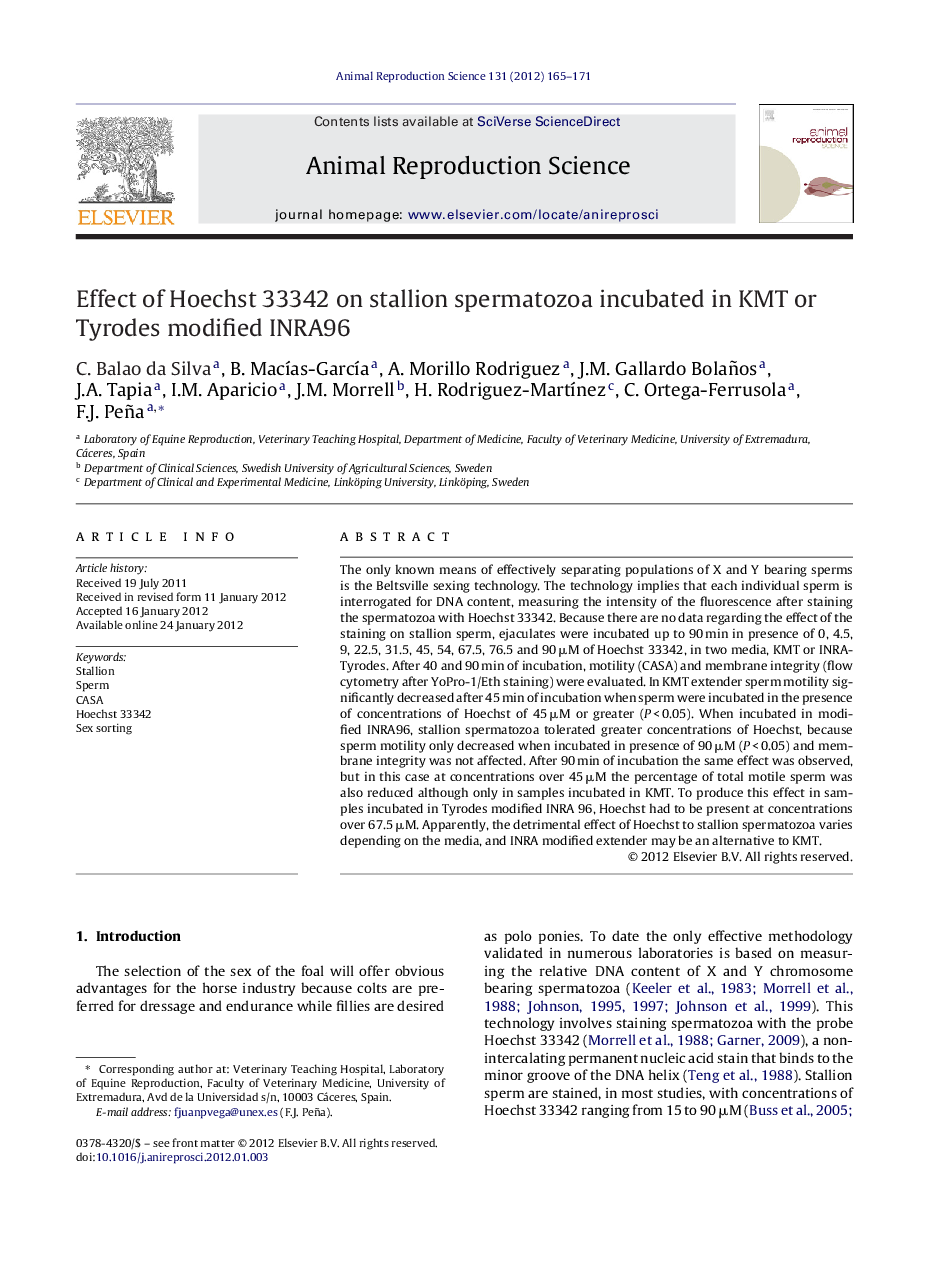| Article ID | Journal | Published Year | Pages | File Type |
|---|---|---|---|---|
| 2073197 | Animal Reproduction Science | 2012 | 7 Pages |
The only known means of effectively separating populations of X and Y bearing sperms is the Beltsville sexing technology. The technology implies that each individual sperm is interrogated for DNA content, measuring the intensity of the fluorescence after staining the spermatozoa with Hoechst 33342. Because there are no data regarding the effect of the staining on stallion sperm, ejaculates were incubated up to 90 min in presence of 0, 4.5, 9, 22.5, 31.5, 45, 54, 67.5, 76.5 and 90 μM of Hoechst 33342, in two media, KMT or INRA-Tyrodes. After 40 and 90 min of incubation, motility (CASA) and membrane integrity (flow cytometry after YoPro-1/Eth staining) were evaluated. In KMT extender sperm motility significantly decreased after 45 min of incubation when sperm were incubated in the presence of concentrations of Hoechst of 45 μM or greater (P < 0.05). When incubated in modified INRA96, stallion spermatozoa tolerated greater concentrations of Hoechst, because sperm motility only decreased when incubated in presence of 90 μM (P < 0.05) and membrane integrity was not affected. After 90 min of incubation the same effect was observed, but in this case at concentrations over 45 μM the percentage of total motile sperm was also reduced although only in samples incubated in KMT. To produce this effect in samples incubated in Tyrodes modified INRA 96, Hoechst had to be present at concentrations over 67.5 μM. Apparently, the detrimental effect of Hoechst to stallion spermatozoa varies depending on the media, and INRA modified extender may be an alternative to KMT.
